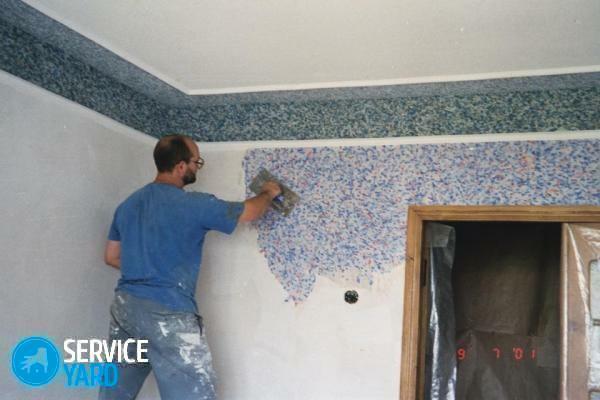Stones help create a harmonious landscape design. They can be of different sizes, colors or shapes. How to choose a material for decoration and what you need to know about the use of stones in landscape design?
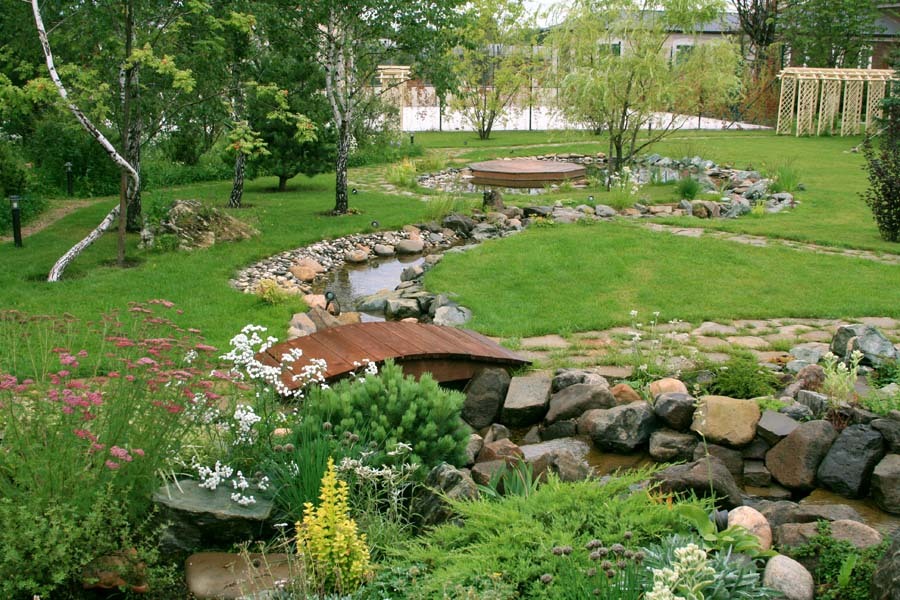
Large or small, gravel or boulders, slabs or shards - any stones can be used in your garden
Classification of stones
Content
- Classification of stones
- Artificial or Natural?
- Glowing stones
- How to choose a stone for the landscape
- We paint and decorate
- Video: Ideas for decorating a garden and yard with stones
- Photo: Stones in the landscape of a suburban area
Immediately, we note that you should not "collect" all kinds of stones on your site. This is no longer a design, but a demonstration of the materials you have. The feeling of naturalness is lost and the composition looks rough. Professionals recommend using two, maximum three types of stones.
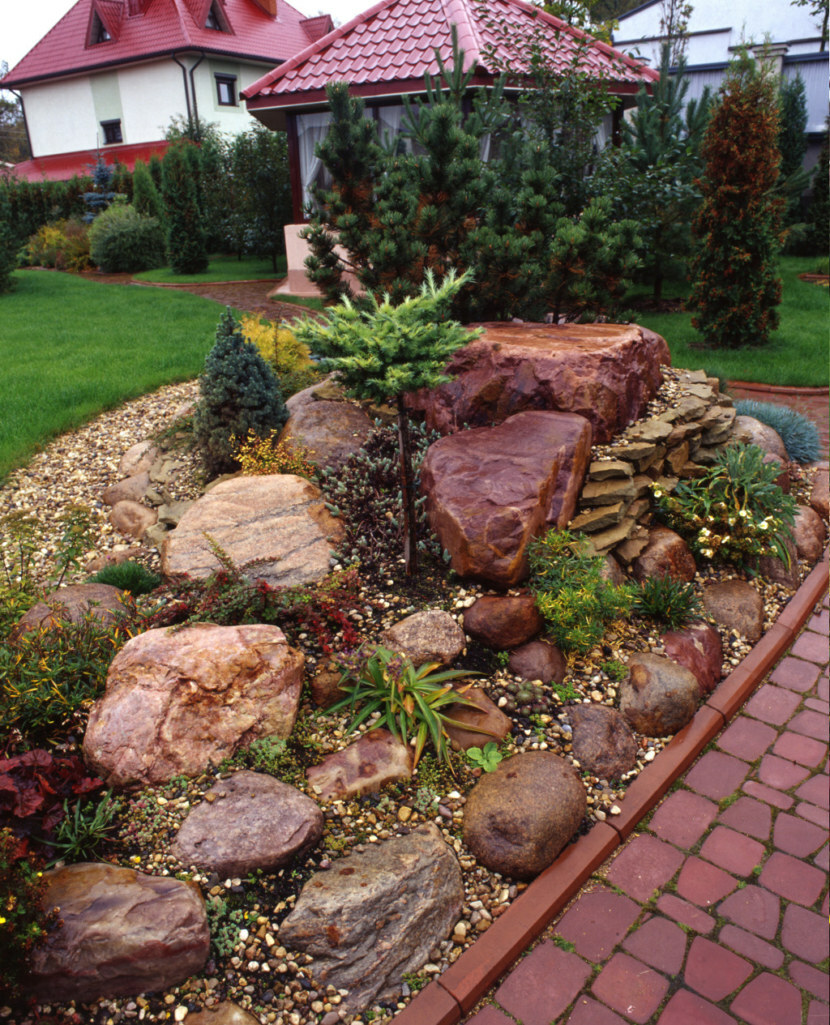
All stones can be divided into natural and artificial
Artificial or Natural?
These are two categories into which all stones are divided. More often they prefer natural ones, but even here it is not so simple. Not all natural stones have the same characteristics, so choose the one that suits your needs. The first thing that draws attention is the durability and attractive appearance.
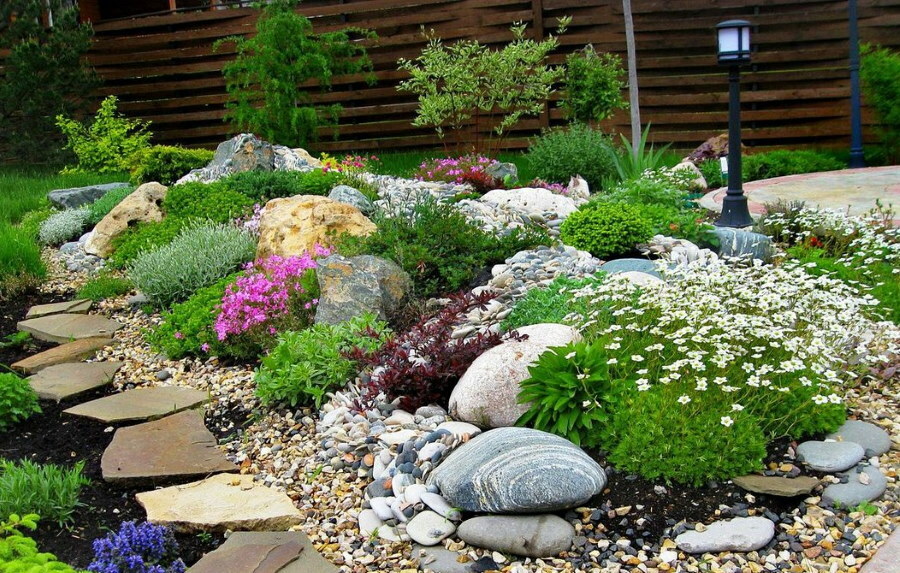
Stones are part of nature, which is why they look very natural in the garden and flower beds
The leaders among natural stones are granite, basalt and gneiss. Granite is a unique material in its composition; it contains natural mica, spar and quartz. In addition, its distinctive feature is the color. Granite can be graphite, gray, greenish and even pink. Such a natural assortment allows the use of stone for a variety of purposes, from finishing buildings to the construction of flower beds and flower beds. In any case, the stone is very effective. But its cost is not available to everyone.
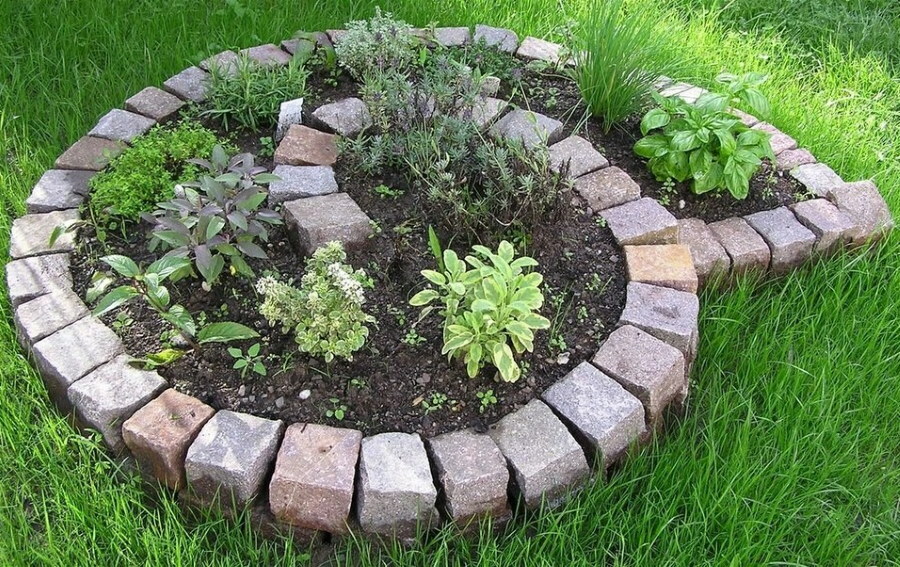
Medium-sized natural stones can be laid out on a flower bed
Basalt has a porous structure and no less varied color than granite. It is more often used for alpine slides.
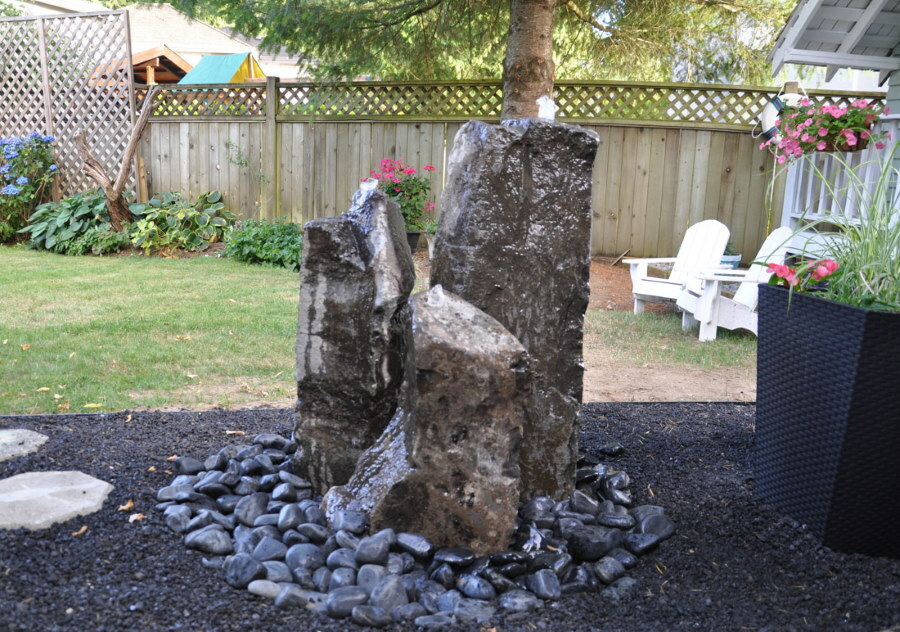
Garden fountain made of basalt boulders
Gneiss is very similar in appearance and properties to granite. It is in demand for the construction of fences.
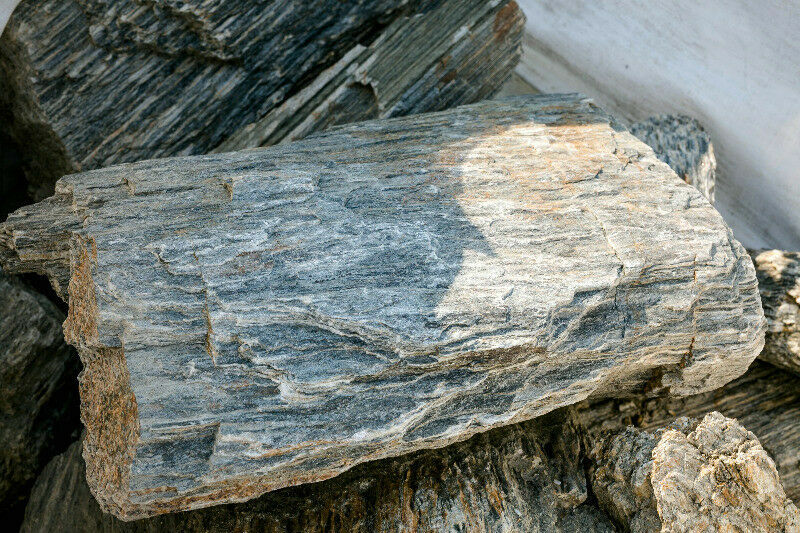
The attractive texture of gneiss allows the stone to be used for various garden decorations
The main advantage of artificial stones is their price. The most common artificial stones are brick and concrete. Brick has been used for a long time. Possesses high technical characteristics, resistant to mechanical stress, to temperature extremes. Since it is produced in different colors, interesting design solutions are created from it, ranging from garden paths with an ornament, ending with a fence of flower beds or a front garden.
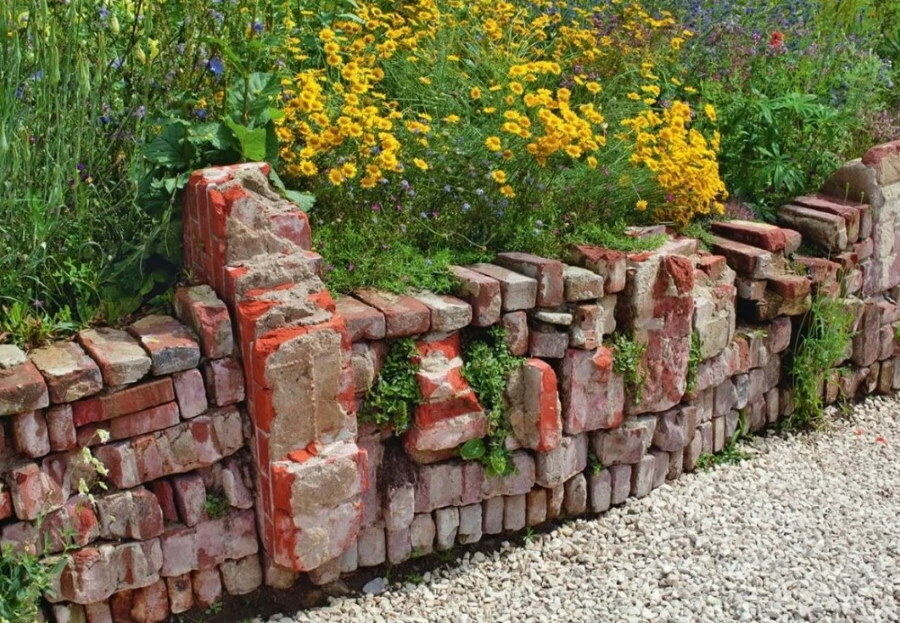
The old red brick will still serve as a retaining wall
Concrete is highly durable, and you can make it bright and interesting using different dyes.
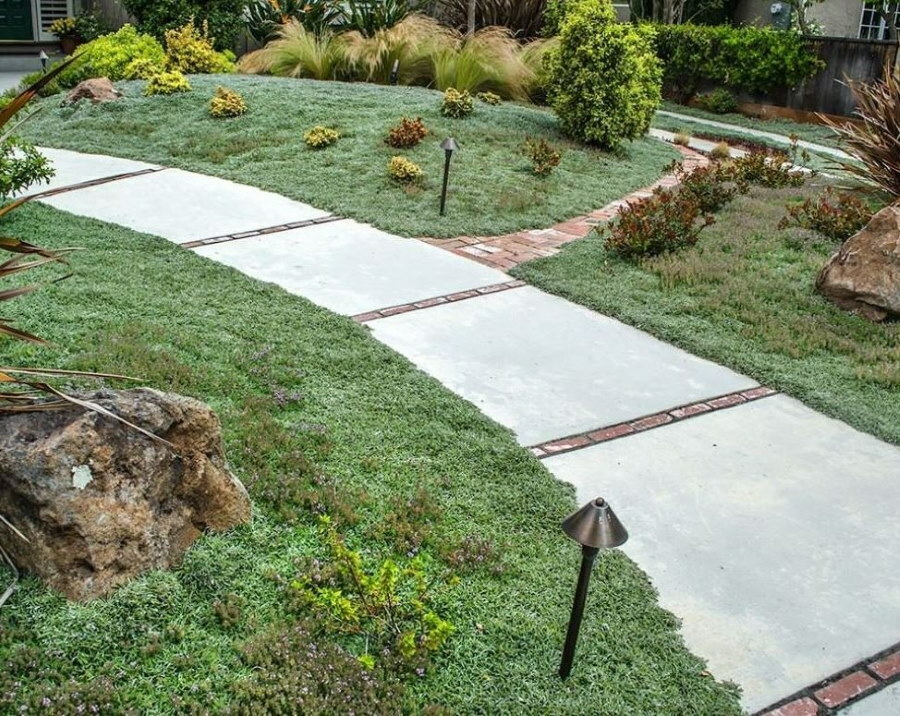
Strong and durable walkways emerge from concrete slabs
Depending on the origin, natural stones are classified into the following types:
- Volcanic rock. These include granite, basalt, diabase. These stones are distinguished by a strong base and great weight. Such specimens will stand on your site for many years and nothing will happen to them. Volcanic stones look very impressive not only due to their shape, but also due to their multi-colored color. They are used for decoration, both in the original form and in the polished version. The only significant "drawback" is the high price.
- Sedimentary rock. The main representatives of this "species" are sandstone, shell rock, dolomite. In the natural environment, stones are laid in layers, have a porous structure. They are not highly durable. By hitting with a blunt object, such a stone can be easily broken. Most often, "representatives" of sedimentary rock are used to decorate the facades of houses, stairs, create floors on open verandas, or for the manufacture of spectacular decorative borders. Also, tiles are made from such a stone, since the breed is easy to process. A distinctive feature is soft natural shades that easily harmonize with any style.
- Metamorphic rock. Shungite, marble, slate are the brightest representatives. By origin, they belong to sedimentary rock. However, in comparison with shell rock or sandstone, they are more durable. Therefore, metamorphic rock, along with volcanic stones, is used in various works: both for decoration and for imparting strength.
And depending on the size and shape, the stones have the following gradation:
- Lump. Textured, volumetric stone with an untreated surface.
- Boulder. Slightly less lumpy and rounded. Appears due to the effects of water and wind.
- Cobblestones. Small in shape with a streamlined surface.
- Pebbles. Rounded stones of different shapes and colors, small in size.
- Crushed stone. Waste from stone production. Small shards with sharp edges, of various sizes and shapes.
- Sand and stone screening. These are the smallest "stones".
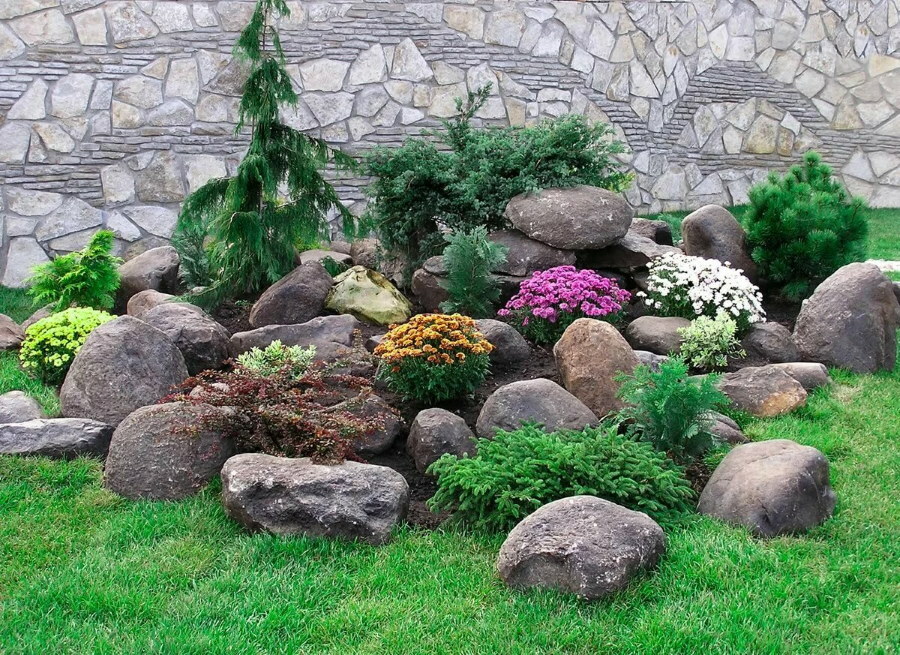
The largest and most beautiful boulders are used for the base of an alpine slide.
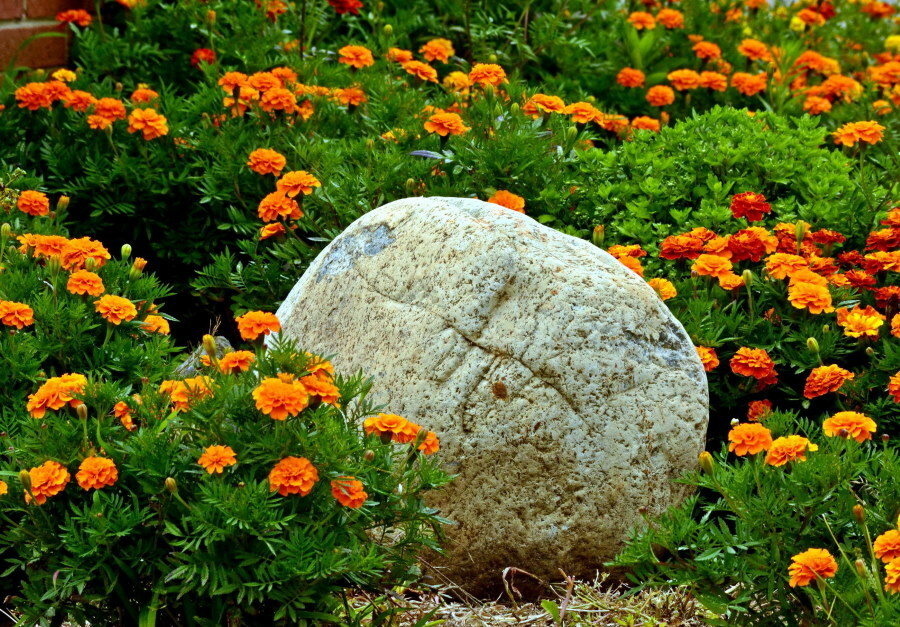
A single stone can break the monotony of a green lawn or decorate flower plantings with it.
Glowing stones
Recently, glowing stones are gaining more and more popularity. Let's dwell on them in more detail.
These are artificial stones made using a special technology. They appeared relatively recently, but quickly won the attention of connoisseurs of the new, interesting. Such know-how in the landscape of a summer cottage turns the most ordinary garden into a fabulous paradise where you want to relax or chat in a pleasant company.
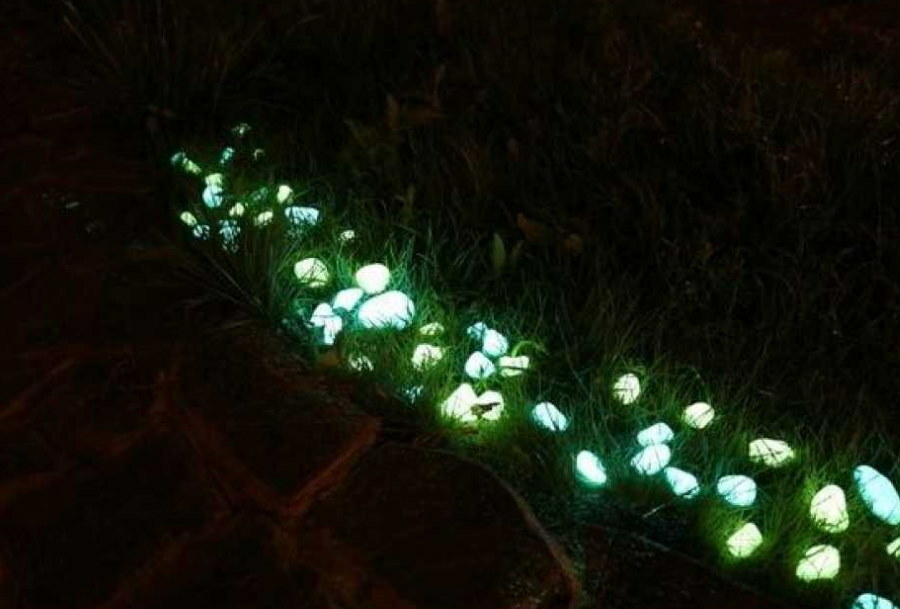
The stones glowing in the dark perform not only a decorative function, but also serve as a source of illumination, which is enough for orientation in the dark.
Varieties of glowing stones:
- Hollow tank with integrated LEDs. Such models are distinguished by a long service life - up to ten years, although they are more expensive than other glowing stones. In daylight, they look like translucent shards. And in the dark - a spectacular decoration.
- Plastic "stones" with catalysts. This is a budget option. "Stones" accumulate solar energy during the day, and shine in the evening. They require minimal maintenance, the main thing is not to forget to wipe the dust from the surface. Another advantage is its low weight and a suitable "appearance" - the device looks like an ordinary stone.
- It is possible to turn any element of landscape design into a luminous one. For this, a special luminescent paint is used. Poles, pebbles near the flower bed, tiles - whatever you want, you can make it glow in the dark. After covering the object with a layer of paint, do not forget to apply a layer of varnish on top of it so that the glowing paint will last longer.
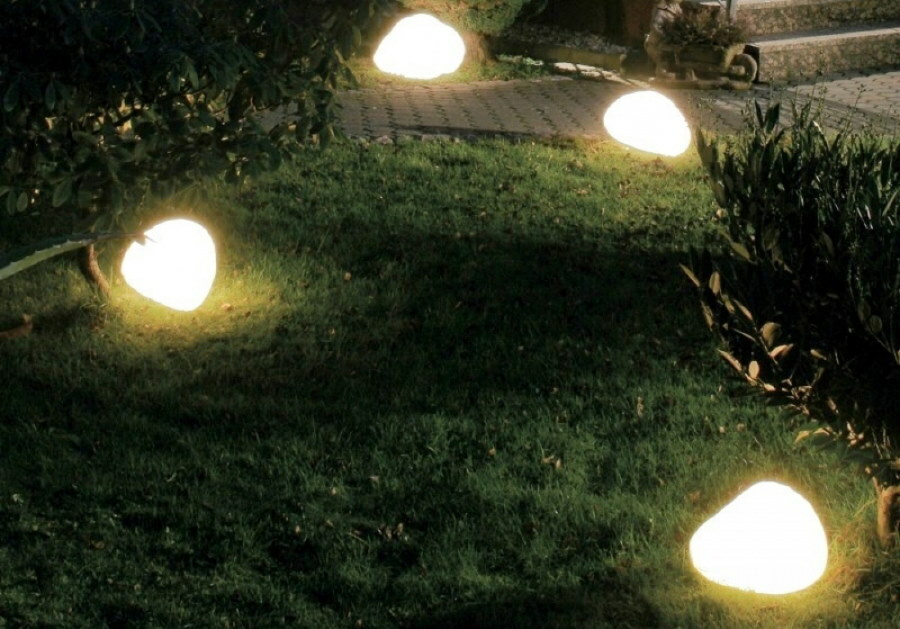
Glowing stones with built-in LEDs
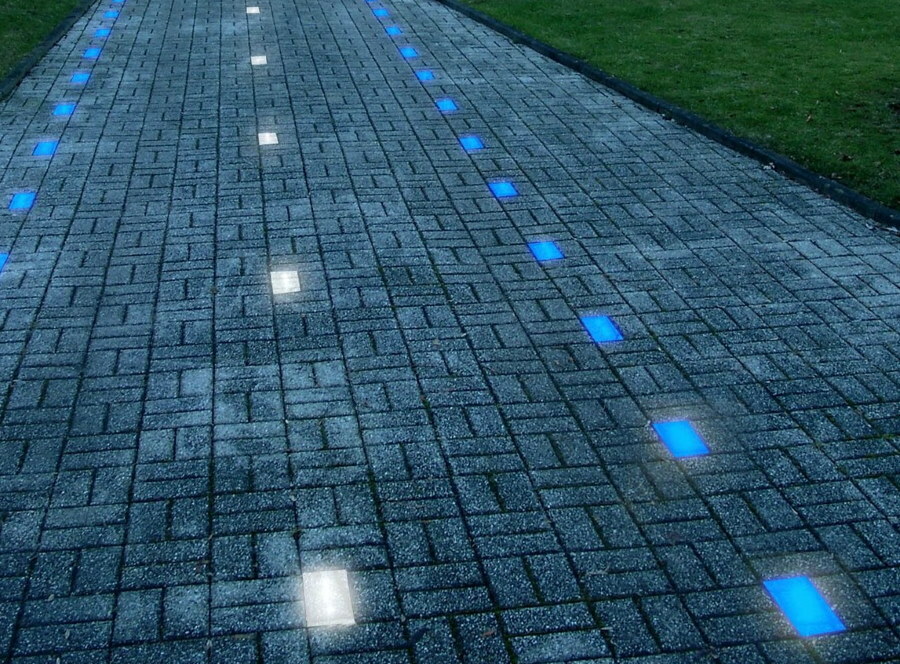
Luminous paving stones embedded in the garden path
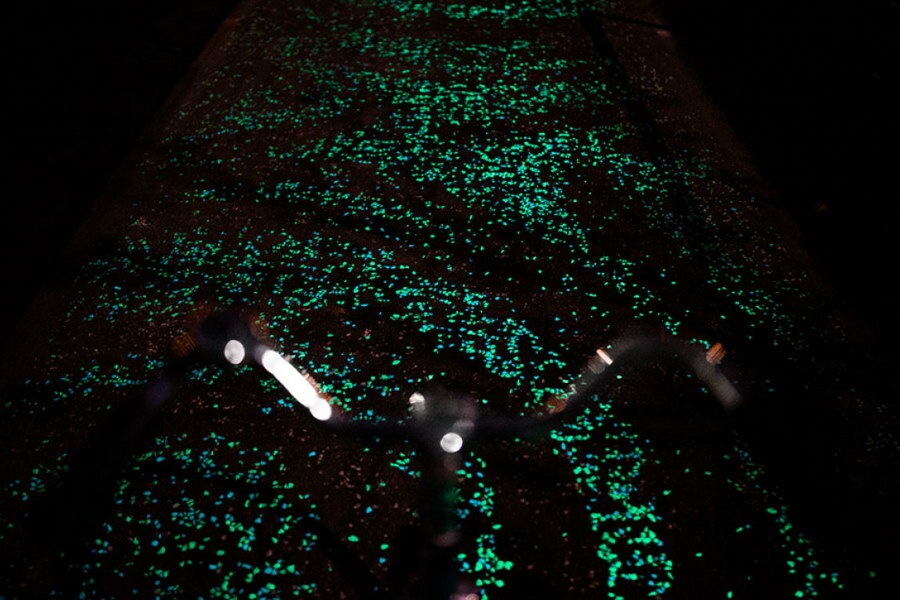
And this is how decorative lighting from pebbles painted with fluorescent paint looks like
How to choose a stone for the landscape
The question is very important, since not any stone for the landscape is suitable for the embodiment of a specific idea. First of all, clearly define what exactly you are going to create on a suburban area so that the stones "revolve" around your idea, and not vice versa.
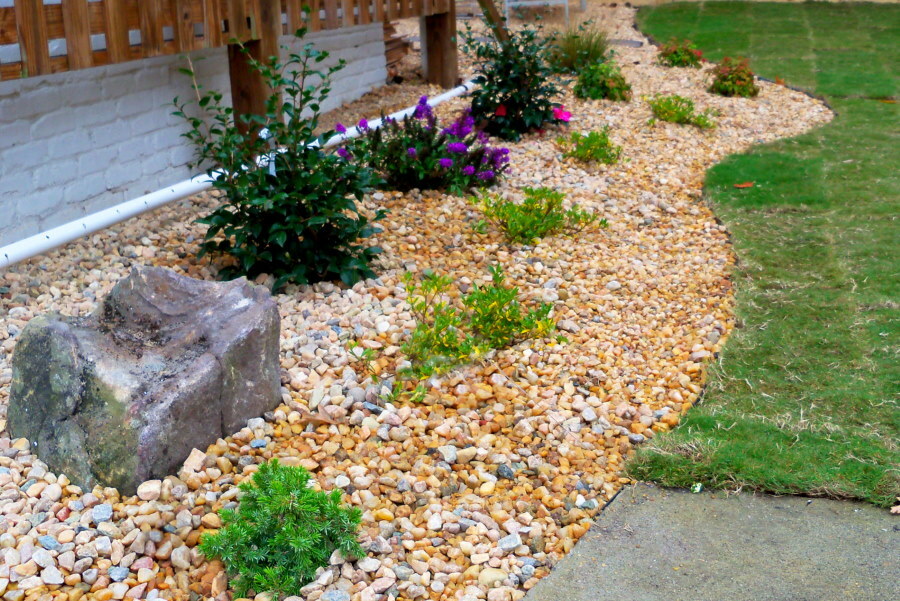
Small chippings and pebbles are often used for mulching the surface of the earth in flower beds and under trees.
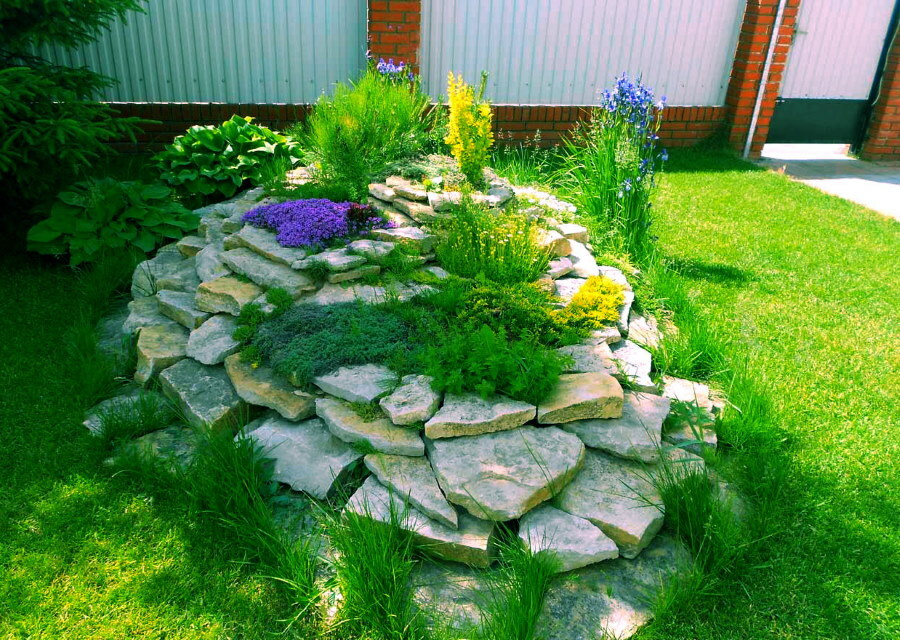
For the design of an alpine slide, both boulders and flat stones laid in rows are suitable
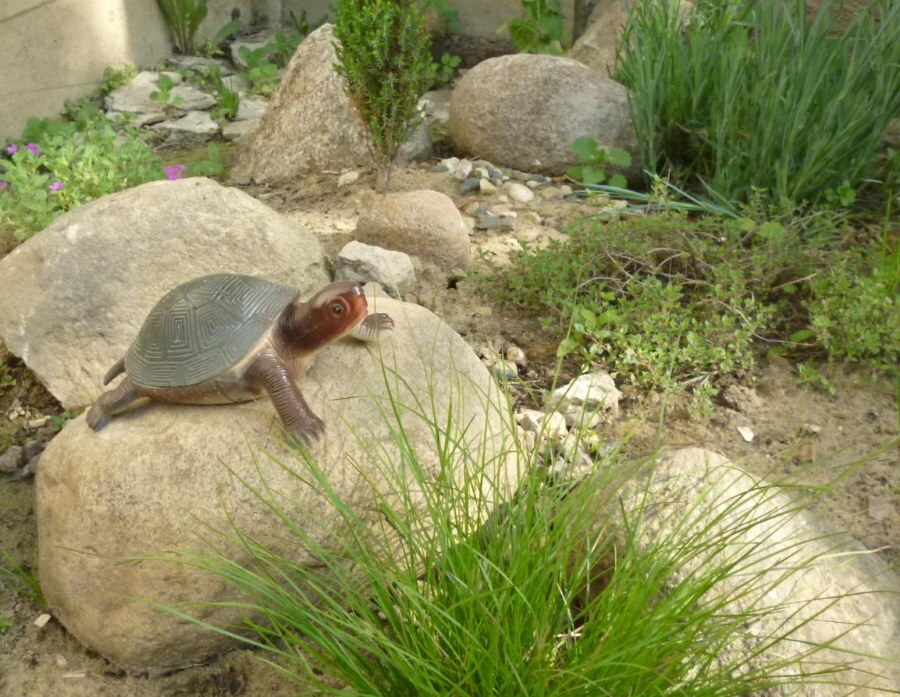
Even a few stones can dramatically change the secluded corner of your garden.
Listen to the advice of experts, choose those stones that are suitable not only in terms of external data, but also in terms of technical characteristics, degree of strength and durability. Even the size of the site affects the choice of stones: the smaller the area, the smaller the boulders or cobblestones should be. Large "rocks" in a small area will look ridiculous, and tiny stones on a plot of ten hectares will simply be lost.
The color and texture should also be appropriate. Only in this case, landscape design with stones represents a general concept, and not a demonstration of the available details for decorating the site.
We paint and decorate
There are many options for using decorative stone in the garden. For example, if you like to combine stones with flowers, shrubs or conifers, then slate, granite and limestone are ideal choices.
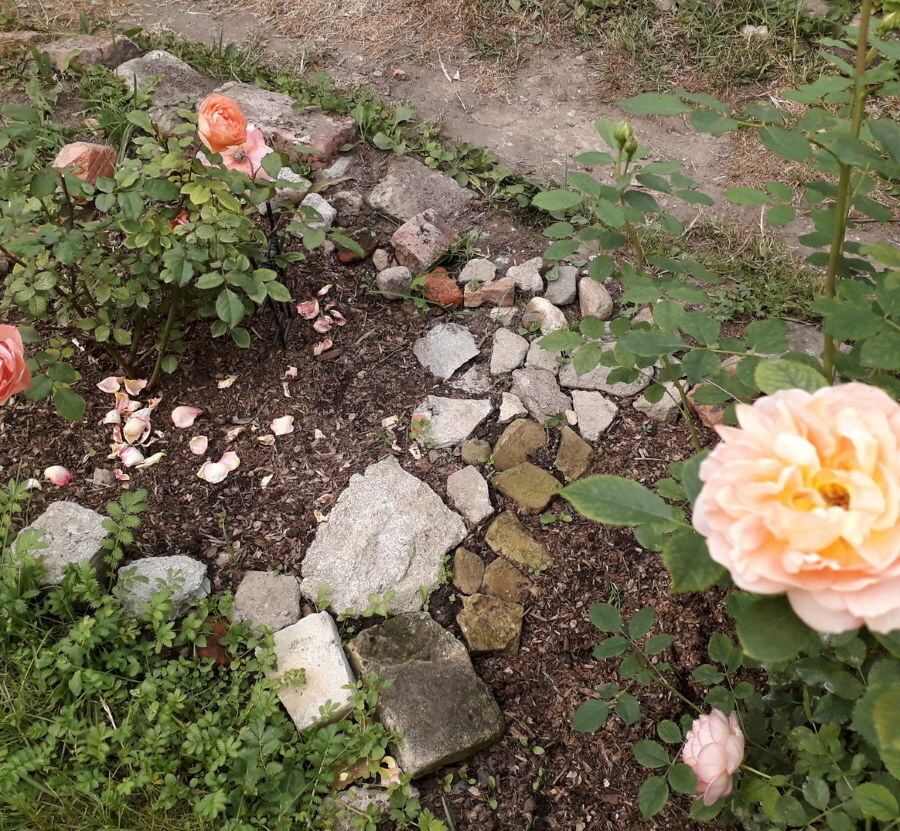
A small path laid out in a flower garden made of flat pebbles will add convenience when caring for plants
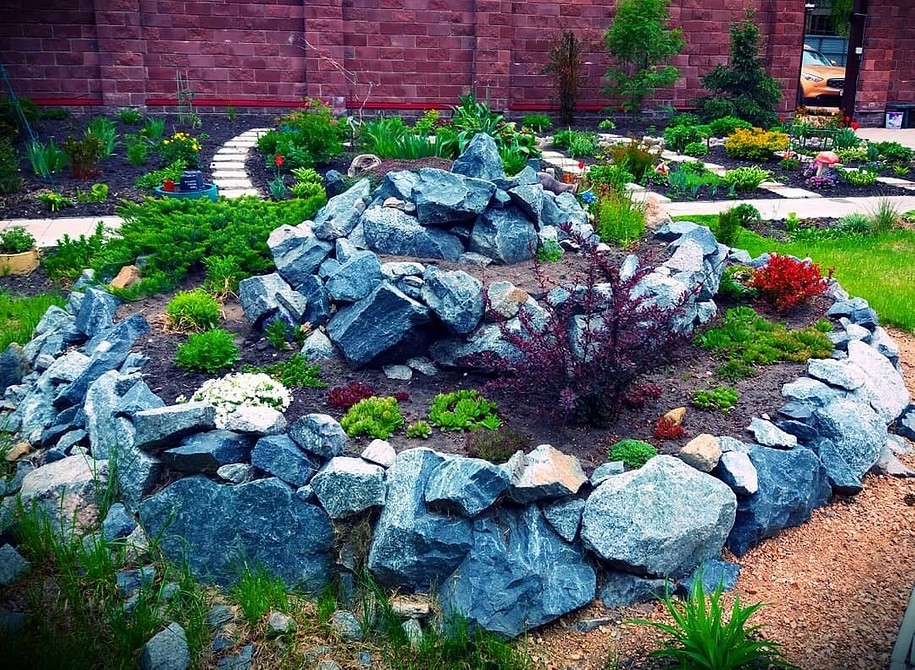
Stones laid along the edges of the flower bed will not allow the soil to be washed away with water when watering
If you consider yourself a fan of rock gardens and are ready to equip all the free space with their help, then the main thing is not to overdo it with the number of different rocks. Such a "collection" will only emphasize the artificiality of the landscape. By the way, the stone for decorating an alpine slide can be either monochromatic or colored. Moreover, you can paint it yourself. Most importantly, do not forget to apply a layer of varnish on top of the paint to the stone so that the color lasts longer.
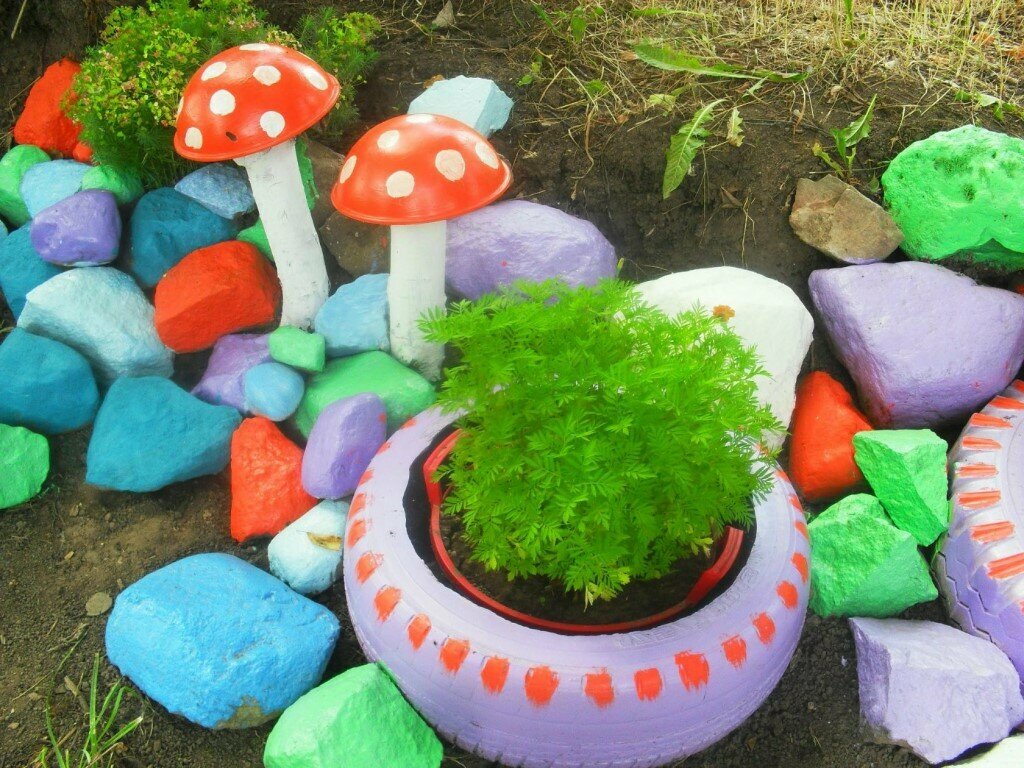
From stones painted in different colors, you can create bright decorative elements in the garden
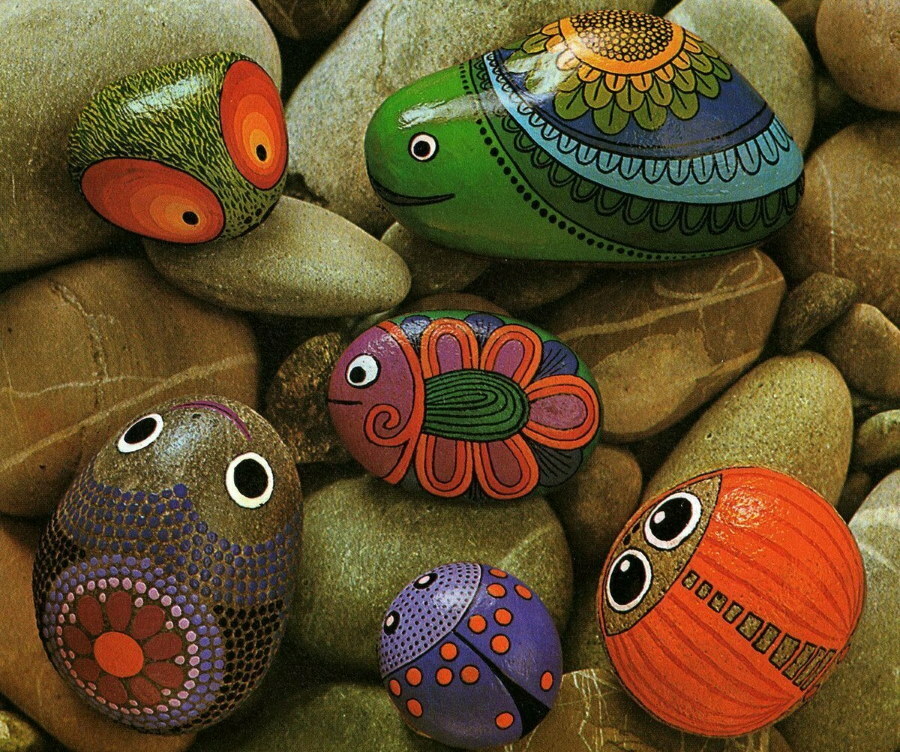
The highlight of the garden can be a composition of pebbles painted under insects or animals
Basalt, granite and concrete are suitable for creating spectacular garden paths. Limestone and sandstone will not withstand the load and will quickly collapse.
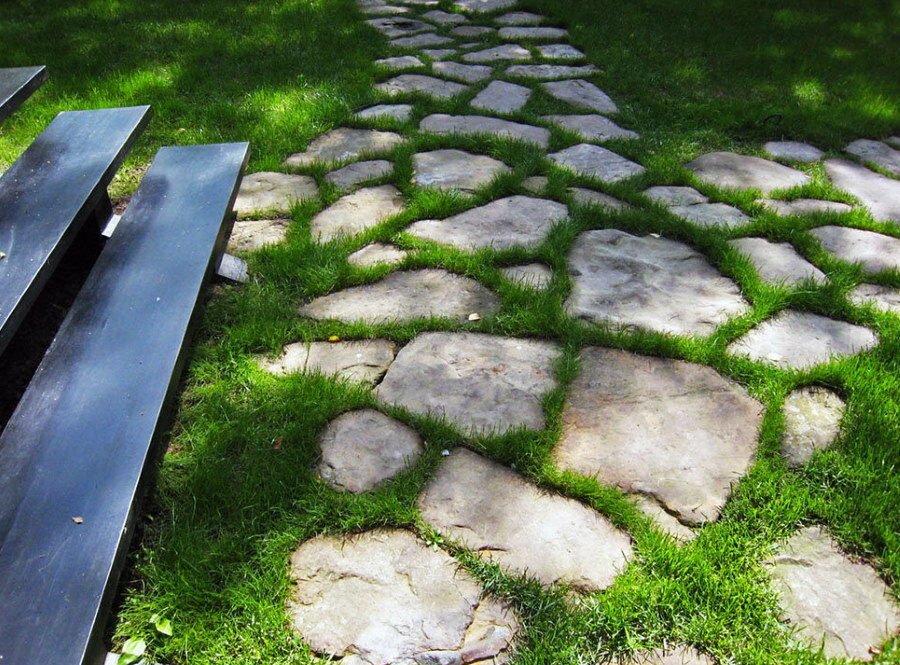
The simplest version of a garden path is flat stones, laid with a small distance from each other.
Stone in landscape design is an irreplaceable element. With its help, they create not only powerful and impressive structures in size, but also a neat, almost weightless design of rock gardens and flower beds. And do not be afraid to experiment, who knows, or maybe it is your idea that will become a new word in landscape design.

